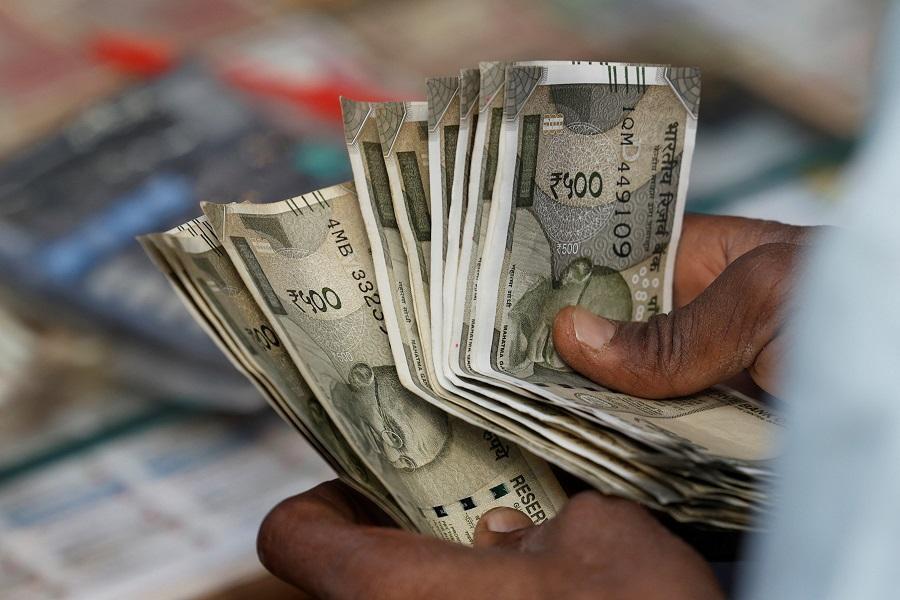
Rupee Set to Open Weaker as Trump Threatens 25% Tariff on Exports
The Indian rupee is likely to open weaker on Thursday after U.S. President Trump threatened a 25% levy on Indian exports, despite ongoing talks. The news has sent shockwaves through the financial markets, causing traders to anticipate a weaker opening for the rupee.
The rupee has been under pressure in recent days, with the 1-month NDF suggesting an opening range of 87.66-87.69, versus 87.42 previously. This is close to its record low of 87.95, which was set last year.
Traders are expecting the Reserve Bank of India (RBI) to intervene in the market to stabilize the rupee, given the threat of a 25% tariff on Indian exports. The RBI has been actively intervening in the market in recent months to prevent a sharp decline in the value of the rupee.
The threat of a 25% tariff on Indian exports comes as India and the U.S. are engaged in talks to resolve their trade differences. The U.S. has been pressing India to increase its imports of American goods, including agricultural products and oil, and has threatened to impose tariffs on Indian exports if an agreement is not reached.
The Indian government has been resisting the U.S. demands, arguing that its economy is already under strain due to the impact of the COVID-19 pandemic. India has also been trying to diversify its trade links with other countries, including China and Europe, to reduce its dependence on the U.S.
The threat of a 25% tariff on Indian exports has sent shockwaves through the financial markets, causing the rupee to weaken against the dollar. The 1-month NDF, which is a market-based indicator of the rupee’s value, has fallen to levels not seen since the COVID-19 pandemic began.
The weakening of the rupee has also had an impact on the Indian stock market, with the benchmark S&P BSE Sensex falling by over 1% on Wednesday. The rupee’s weakness has also made imports more expensive, which could lead to higher inflation in the country.
The RBI has been trying to stabilize the rupee by intervening in the market and selling dollars to prevent a sharp decline in the currency’s value. The central bank has also been trying to boost the country’s foreign exchange reserves, which have been declining in recent months.
The Indian government has also been trying to boost exports and reduce imports to reduce the country’s dependence on foreign oil. The government has been offering incentives to exporters and has been trying to promote domestic production of goods such as electronics and textiles.
The threat of a 25% tariff on Indian exports has also had an impact on the country’s economy, with the rupee’s weakness making imports more expensive. The country’s imports of goods such as oil, gas, and wheat could become more expensive, which could lead to higher inflation and a reduction in the country’s economic growth.
In conclusion, the Indian rupee is likely to open weaker on Thursday after U.S. President Trump threatened a 25% levy on Indian exports, despite ongoing talks. Traders expect the Reserve Bank of India to intervene in the market to stabilize the rupee, which is close to its record low of 87.95.
The threat of a 25% tariff on Indian exports has sent shockwaves through the financial markets, causing the rupee to weaken against the dollar. The weakening of the rupee has also had an impact on the Indian stock market, with the benchmark S&P BSE Sensex falling by over 1% on Wednesday.
The RBI has been trying to stabilize the rupee by intervening in the market and selling dollars to prevent a sharp decline in the currency’s value. The central bank has also been trying to boost the country’s foreign exchange reserves, which have been declining in recent months.
The Indian government has also been trying to boost exports and reduce imports to reduce the country’s dependence on foreign oil. The government has been offering incentives to exporters and has been trying to promote domestic production of goods such as electronics and textiles.
The threat of a 25% tariff on Indian exports has also had an impact on the country’s economy, with the rupee’s weakness making imports more expensive. The country’s imports of goods such as oil, gas, and wheat could become more expensive, which could lead to higher inflation and a reduction in the country’s economic growth.






